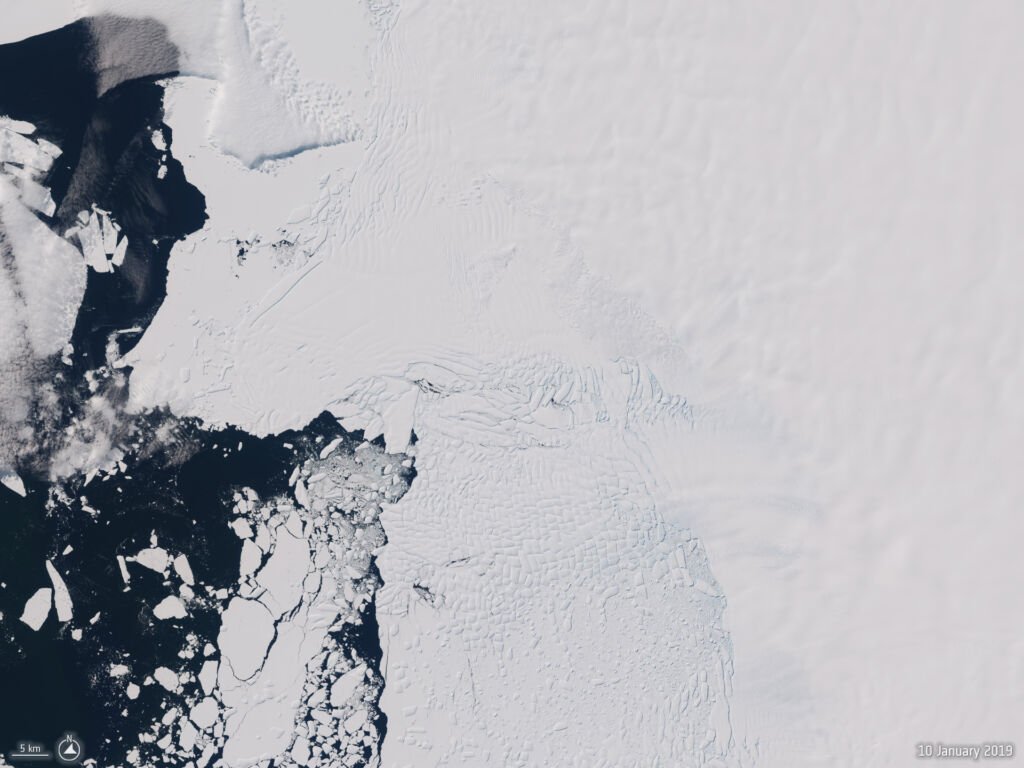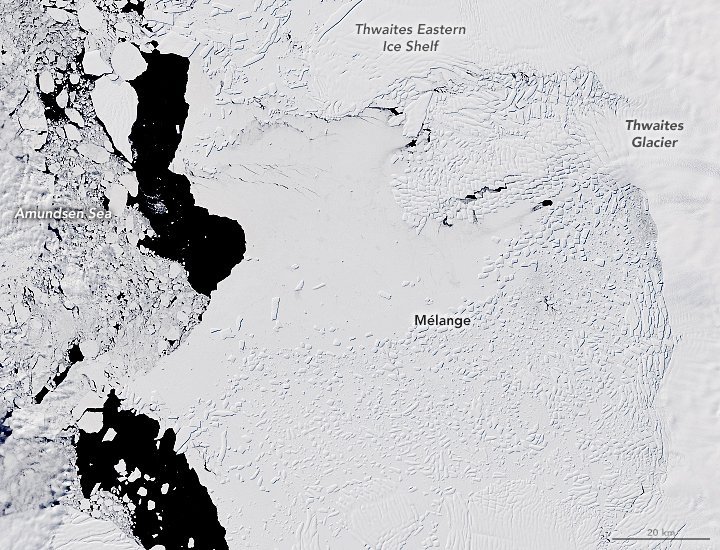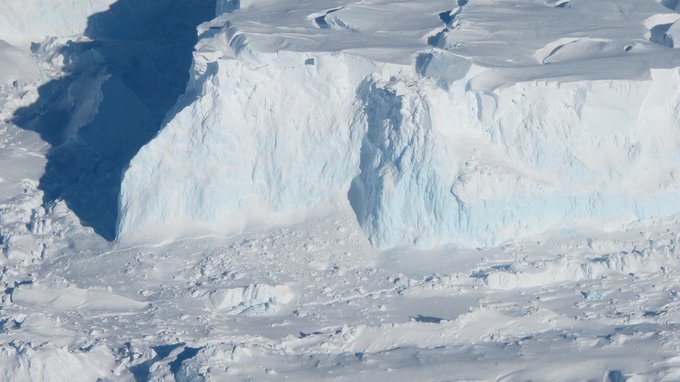Introduction:
In the frozen realm of West Antarctica, a crisis unfolds. Thwaites Glacier, a titan of ice the size of Florida, earned its ominous nickname, the “Doomsday Glacier,” with chilling reason. Warming ocean currents gnaw at its underbelly, weakening its grip on the seafloor. Every year, billions of tons of ice break away, their disintegration adding to the relentless rise of global sea levels.

Scientists watch with growing unease. This isn’t just another melting glacier. Its collapse could trigger a chain reaction, destabilizing the entire West Antarctic Ice Sheet. Coastal cities worldwide, from Miami to Mumbai, would face a watery onslaught. But uncertainty lingers: how fast will Thwaites melt? What chain of events could it unleash?
The answers lie buried beneath kilometres of ice and in complex climate models. The Doomsday Glacier holds a chilling prophecy about our planet’s future, and the race is on to decipher its warning before it’s too late.
The Doomsday Glacier - Location, Size, Volume:
Location:
Thwaites Glacier sits in West Antarctica, part of the Amundsen Sea Embayment. It is a remote location – roughly equidistant between the UK’s Rothera Research Station and the US McMurdo Research Station.
Previous Shape and Size:
During the last glacial maximum (~20,000 years ago), Thwaites Glacier extended much farther out onto the continental shelf. Evidence suggests it has retreated significantly since then, and this retreat has accelerated in recent decades due to climate change.
Current Size and Volume:
Size: Thwaites Glacier covers approximately 192,000 square kilometers (74,000 square miles), making it roughly the size of Florida or the entire island of Great Britain.
Volume: The total ice volume is estimated at around 483,000 cubic kilometers. Of that, roughly 258,000 cubic kilometers is above sea level, which is the ice that would contribute directly to sea-level rise if it melts.
Depth:
The grounding line (where the glacier transitions from resting on land to floating on the ocean) is over 1000 meters (3,280 feet) below sea level in some places. The ice is thickest inland, reaching depths of up to 4 kilometres (2.5 miles).
Density:
Glacier ice typically has a density of around 900 kilograms per cubic meter. However, the density can vary depending on factors such as the presence of air bubbles and impurities.
These measurements are constantly evolving as scientists gather more data about the glacier. Thwaites is a dynamic system, and its size, shape, and volume are changing rapidly.
The potential collapse of Thwaites Glacier isn’t just about its own ice volume. Its position acts as a brace for other glaciers. Its collapse could trigger wider destabilization of the West Antarctic Ice Sheet, which holds enough ice to raise sea levels by several meters.
Threats to the Doomsday Glacier:
Thwaites Glacier faces a multifaceted assault, driven largely by climate change and its effects. Here are the threats –
1. Warming Ocean Waters:
Scientists identify this as the most critical factor destabilizing Thwaites. Warmer ocean currents circulate beneath the glacier’s floating ice shelf, melting it from below.
This undermines the glacier’s grounding line, the point where it transitions from resting on land to floating on the sea. As the grounding line retreats, more ice is exposed to warm water, accelerating the process.
2. Increased Surface Melt:
Rising Temperatures: Air temperatures in the region are increasing, leading to more surface melt on the glacier. This creates meltwater pools that can seep into cracks, widening them and further weakening the ice.
Albedo Effect: As more ice melts, it exposes darker surfaces, which absorb more solar radiation than pristine white ice. This creates a feedback loop where more heat absorption leads to even faster melting.
3. Ice Shelf Weakening and Collapse:
Cracks and Crevasses: The influx of warm water and surface melt destabilize the ice shelf. Crevasses and large cracks form more frequently.
Loss of Buttressing Effect: The ice shelf acts as a barrier, slowing the flow of ice from inland. When it weakens, this buttressing effect is reduced, allowing the glacier to flow faster into the ocean and further contribute to sea-level rise.
3. Ice Shelf Weakening and Collapse:
Marine Ice Sheet Instability: Many glaciers, including Thwaites, sit on beds that slope downwards as you move inland. This means as they retreat, they expose thicker and thicker ice to the ocean. This can create a positive feedback loop leading to rapid, irreversible retreat.
Neighboring Glacier Destabilization: The collapse of Thwaites could remove a crucial buttressing point for other glaciers in the West Antarctic Ice Sheet. This could trigger wider regional destabilization with catastrophic sea-level rise consequences.
Changes in Wind and Circulation Patterns: Shifts in atmospheric and ocean circulation can bring warmer waters to certain areas around Antarctica, further driving melt.
It’s vital to note that these factors are interconnected and complex. While warming oceans are the clear driving force, the other threats play significant roles in accelerating the glacier’s potential demise.
Potential Catastrophic Effects of the Thwaites Glacier Melt:
Direct Impact: Unlock a Sea-Level Surge:
Thwaites Glacier itself holds enough ice to raise global sea levels by over 65 centimeters (about 2 feet). This alone would inundate low-lying coastal areas around the world, displacing millions and causing immense economic damage.
Trigger Effect: West Antarctic Ice Sheet Destabilization:
The most alarming aspect of Thwaites is its role as a linchpin. It buttresses neighboring glaciers, keeping much of the West Antarctic Ice Sheet in place. A collapse could destabilize these glaciers, accelerating ice loss and potentially unlocking a multimeter rise in sea levels over the coming centuries.
Scale of the Catastrophe:
Sea-level rise won’t be uniform. Many coastal cities around the world would experience far greater inundation than the global average. Cities like Miami, New Orleans, Shanghai, Mumbai, and countless others are particularly vulnerable. Millions of people would be displaced, creating humanitarian crises.
Infrastructure would be destroyed – roads, railways, ports, and even entire islands would disappear. Agricultural land would be lost to saltwater intrusion.

Long-term and Far-reaching Consequences:
Massive Displacement & Refugee Crises: As coastlines are redrawn, hundreds of millions of people would be forced to leave their homes. Entire island nations could disappear. This would create unprecedented refugee crises, straining resources and leading to global political destabilization.
Economic Devastation: Major economic hubs are built along coastlines. Inundation would destroy trillions of dollars worth of infrastructure, crippling global trade, plunging markets into chaos, and sending economic shockwaves across all sectors.
Loss of Agricultural Land: Saltwater intrusion into coastal plains would ruin fertile agricultural land, impacting global food security and leading to widespread food shortages and price spikes.
Salinization of Water Supplies: As saltwater encroaches on freshwater sources, clean drinking water would become scarce in many areas, leading to health crises and further societal stress.
Increased Storm Damage: Rising sea levels provide a higher base for storm surges. Coastal storms like hurricanes would become more devastating, extending their destructive reach further inland.
Cultural Heritage Loss: Countless historical sites, monuments, and places of cultural significance built over millennia along coastlines would face submersion and irreversible loss.
Ecosystem Disruption: Changing water temperatures, salinity, and coastal erosion would profoundly alter marine ecosystems. Fisheries would collapse, and cascading impacts would disrupt food webs and marine biodiversity. This extends to coastal habitats like mangroves and wetlands as well.
Exacerbated Climate Change: Melting permafrost and glaciers can release trapped methane, a potent greenhouse gas, creating a dangerous feedback loop that further accelerates warming.
The effects of the Thwaites Glacier collapse aren’t merely about land disappearing under the sea, but a catastrophic, multi-layered humanitarian and ecological crisis. The costs would be immeasurable and borne by generations to come.
Urgency of Scientific Understanding of the Thwaites Glacier Melt:
- While Thwaites’ destabilization may already be underway, it might not be too late to avoid the worst-case scenarios. Data on the glacier’s internal structure, grounding line retreat, and interaction with oceanic currents will reveal if there are potential points of intervention to slow the melt.

- If the collapse is inevitable, understanding the time frame allows for better adaptation planning – relocating vulnerable populations, redesigning coastal infrastructure, and preparing for humanitarian fallout.
- Current climate models and sea-level rise projections have significant uncertainties. Understanding Thwaites’ behavior is crucial for refining these models.
- Studying Thwaites doesn’t change the underlying cause of its melting – climate change. However, it gives us the most accurate tools to predict the consequences we face.
- This information empowers better decision-making on a global scale – whether it’s about accelerating the transition to renewable energy, investing in coastal defenses, or rethinking international aid policies aimed at climate refugees.
- Thwaites Glacier offers a chilling case study in the complex relationship between ice, ocean, and climate. The insights gained from researching it will improve our understanding of other vulnerable glaciers around the world.
- This knowledge informs wider efforts to mitigate the impacts of a warming planet and helps us better prepare our societies for the challenges ahead.
- Scientists need to know how quickly the glacier could collapse and what factors might accelerate this process. This knowledge is essential to help policymakers and communities prepare for the future.
Science is our most powerful tool in this race against time. Every data point, every breakthrough in understanding the glacier, brings us closer to making informed choices that could shape the legacy we leave for future generations.
Conclusion:
The fate of Thwaites Glacier hangs in the balance, with it, the fate of countless coastal communities worldwide. The clock is ticking. Its collapse could reshape the world as we know it, testing the limits of human resilience. Scientists are relentlessly pursuing knowledge, probing the glacier’s depths, and racing to understand its vulnerabilities.
The Doomsday Glacier isn’t just a scientific curiosity – it’s a call for transformative action. Every fraction of a degree of warming we can prevent, every step we take towards sustainable living, matters. The time for half-measures is over. Thwaites Glacier demands that we confront the reality of climate change and take collective action for ourselves and all who will inherit the Earth we leave behind.
